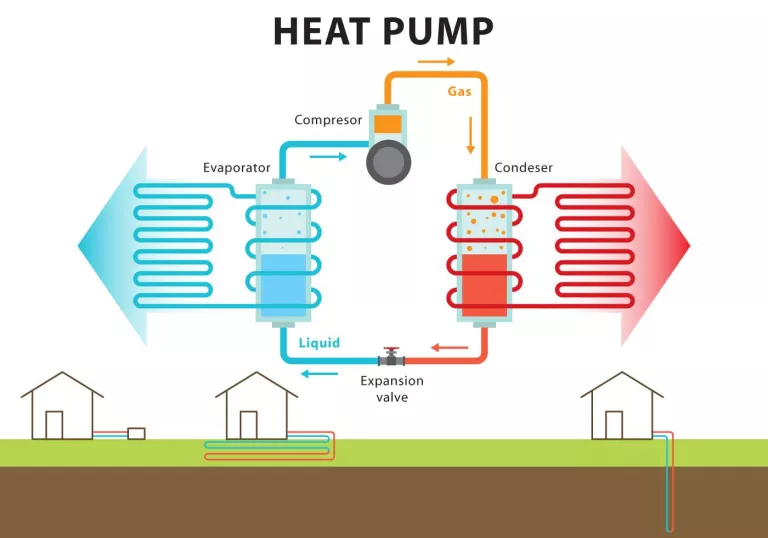Editor’s note: We continue to feature specific climate action ideas authored by UCSB lecturer in environmental studies, Deborah Williams.
Thanks to the effective advocacy of Sierra Club members and others, the Inflation Reduction Act contains new, significant tax savings for energy-efficient home improvements. There has never been a better time to insulate, replace windows and doors, and utilize heat pumps.
About 50% of the energy used in an average US household is for heating and cooling. Fortunately, there are many excellent strategies to reduce heating and cooling energy consumption—from simple and inexpensive options to actions that require more up-front costs, but also save money over time. And now, most of these options benefit from 30% tax credits, subject to certain caps.
Simple Options
Saving energy and reducing your carbon footprint in your house or apartment, including:
- Dress for it, the first best option: Wear warmer clothes around the house in the winter and cooler clothes in the summer, modifying for temperature comfort.
- Clean or replace furnace and air conditioning filters as recommended by the manufacturer and/or home conditions. During smokey periods, this could be monthly. Also, ensure your air vents are not blocked by furniture or artwork.
- During summer, keep blinds, drapes or shades closed during the day, blocking the sun’s heat. And, in winter, keep blinds, drapes or shades open on south-facing windows to allow warm sunlight and then close them at night to help keep the warmth in.
- We can also improve energy efficiency and reduce drafts by repairing and/or modifying our existing windows through caulking and/or weatherstripping to fix air leaks. As an added bonus, caulking helps seal off access points for termites and ants. Furthermore, energy efficient window treatments such as solar control films, awnings, exterior blinds and overhangs, are also great options.
- Finally, California has a Low Income Home Energy Assistance Program (LIHEAP) which provides funding to assist low-income households with managing and meeting their immediate home heating and/or cooling needs. LIHEAP has numerous programs and can provide free energy efficient upgrades.
Replacing Windows and Doors
Almost 30% of a home’s heating energy is typically lost through windows in the winter; and in the summer, about 76% of the sunlight that falls on a single-pane window enters our homes to become heat. Overall, heat gain and loss through windows represents 25-30% of home cooling and heating energy use. Poorly insulated and installed doors are also energy loss culprits. Actions include using new tax rebates to replace single pane windows, including skylights, with new, more energy efficient options. In warm areas like ours, look for window coatings that reduce heat gain.
Energy efficient exterior doors also are eligible for tax rebates, subject, like other categories, to maximum rebate levels.
Insulation
EPA estimates that homeowners can save an average of 15% on heating & cooling costs by properly sealing and adding insulation to their homes.
According to Energy Star, 90% of US homes are under insulated and have significant air leaks. There are also tax rebates for insulation materials. Furthermore, Energy.gov offers an excellent general guide to adding insulation, which helps you decide what type of insulation to add, and the costs and payback of doing so.
For do-it-yourselfers (DIY), the Family Handyman has a guide to installing blown-in attic insulation.
Heat Pumps
Heat pumps are energy efficient options for furnaces, air conditioners and water heaters, and have many other benefits, including reducing indoor air pollution. Ground source heat pumps (a/k/a geothermal heat pumps), in particular, can reduce energy use by 30-60% over a typical electric furnace.
As depicted in a recent Sierra Club magazine article, heat pumps are especially effective in California. As noted earlier, heat pumps and water heater heat pump are now eligible for significant tax rebates, as are electric panel and circuit upgrades for new electric equipment.

Final Notes
It is a good idea to always choose products (insulation, windows, heat pumps) that have the Energy Star rating.
Energy Star.gov has lists of products for many categories, including heating and cooling. The Dept of Energy also provides a very helpful Home Improvement Expert Checklist to plan energy-related projects around your home.
Feel inspired and motivated? Let’s put the Inflation Reduction Act to work in our lives and reduce our home heating and cooling carbon footprints.